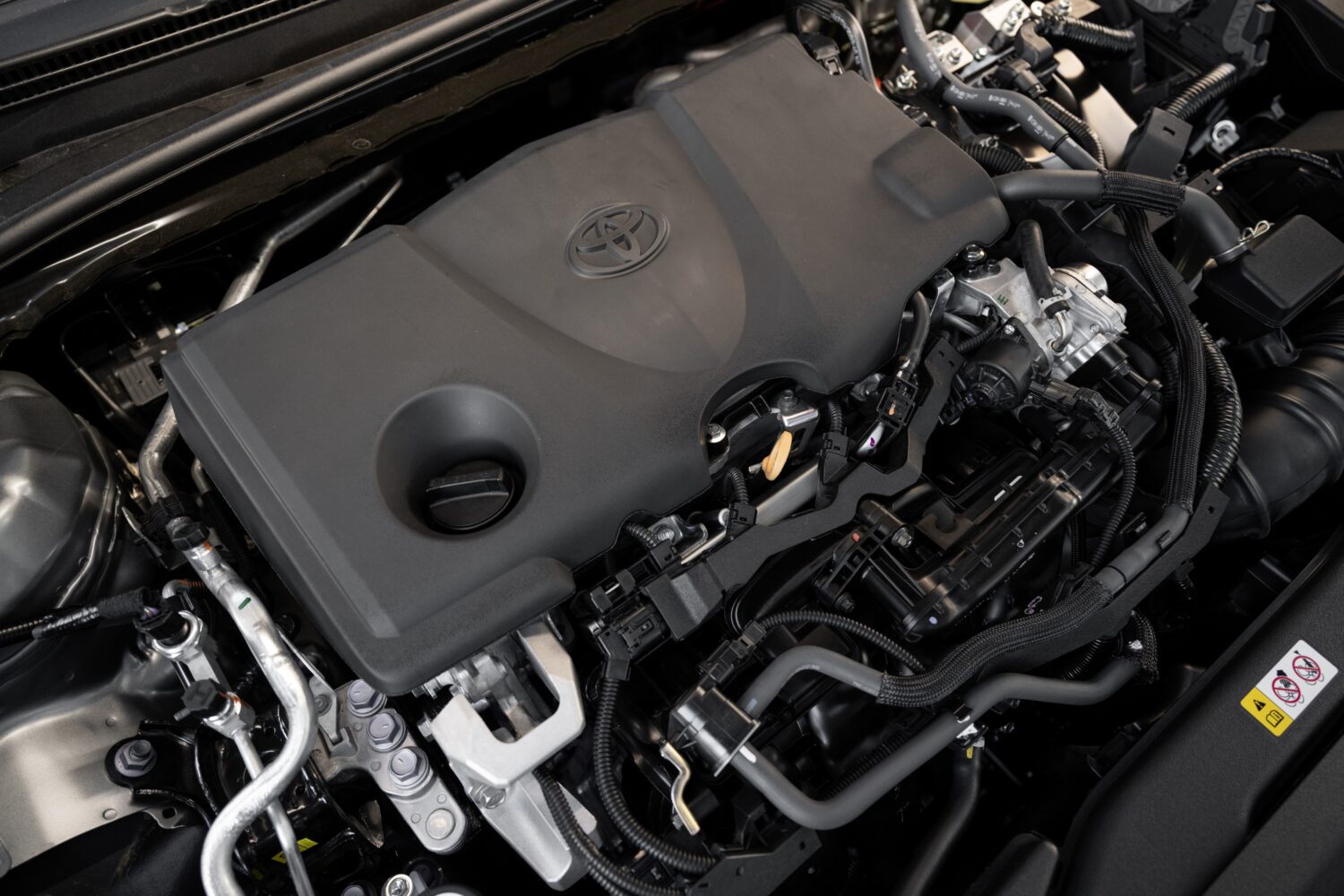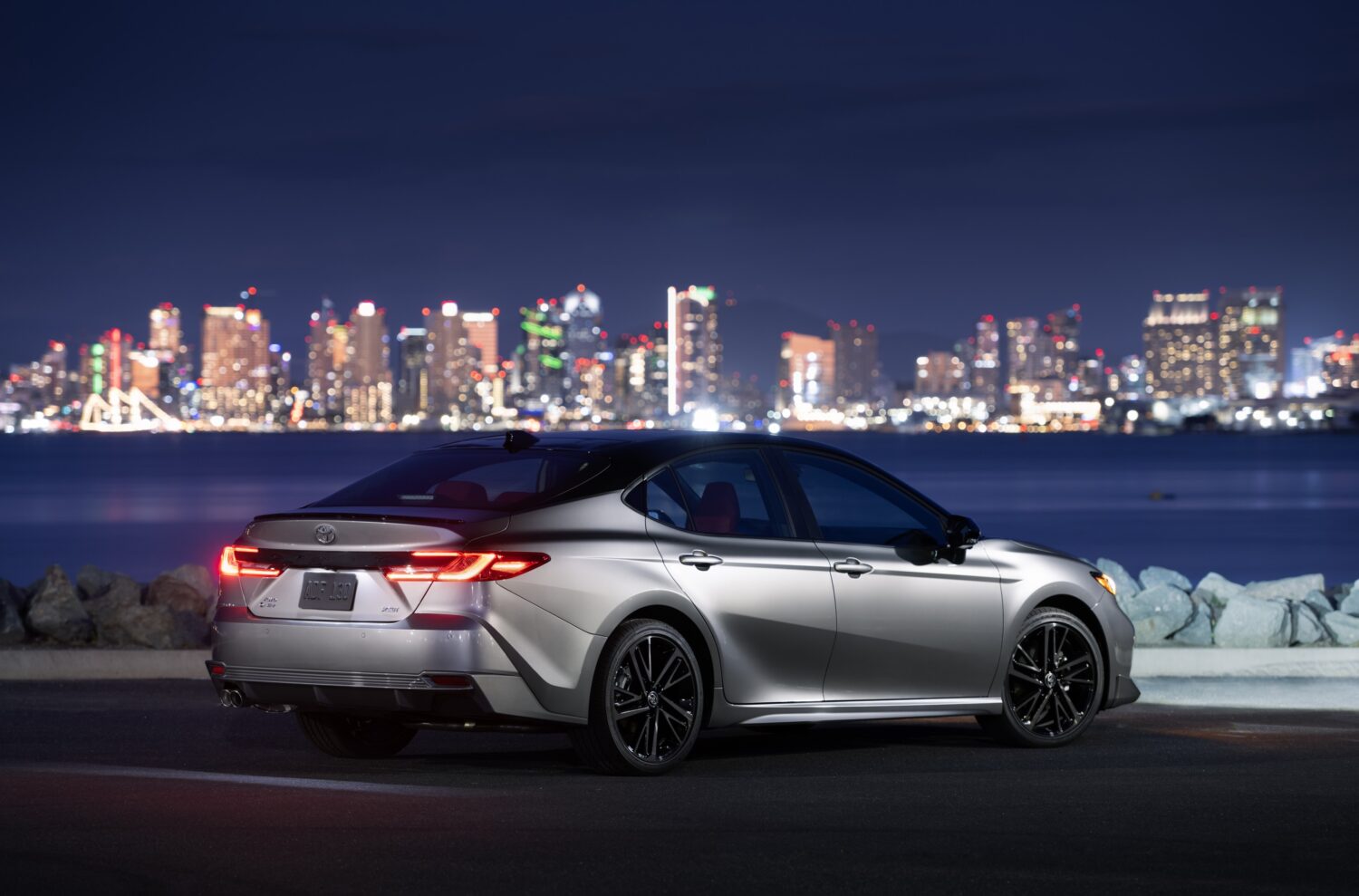The 2025 Toyota Camry is hybrid-only and it’s more powerful than ever
Say goodbye to dummy buttons and hello to the most standard power in the car's history.

Toyota’s trusty Camry sedan has been around for more than two decades. Once a compact, boxy car, the Camry has become a predictable mainstay in America, a beloved four-door fit for everything from transporting clients to hauling families all over town. The humble Camry isn’t ready to lie down and play dead any time soon, either. In fact, it has a few new tricks up its… exhaust pipe, if you will.
Now sold exclusively as a hybrid for its ninth generation, the 2025 Camry is equipped with a steady 2.5-liter, 4-cylinder engine. Paired with a permanent magnet synchronous motor for a combined 225 horsepower with front-wheel drive and 232 horsepower with on-demand all-wheel drive, this Camry starts off with the most standard power in its history.
This isn’t Toyota’s first time selling the Camry as a hybrid, but this is the first time that it’s on the market without a non-hybrid option. In a world that seems to have gone gaga for EVs, this hybrid can achieve up to 51 miles per gallon, which is a respectfully efficient option. All starting at $28,400, which is more than $400 less than the outgoing Camry Hybrid base model.
Retuned suspension
The Camry has been a best-selling car in the U.S. for many years already, so updating it for 2025 required some finesse. Toyota engineers thirsted for ride improvements but they didn’t want to alienate its current fan base, says chief engineer for the Camry Mark DeJongh.
“We weren’t hearing anything negative about the current Camry, but it was our passion to make it better,” explains DeJongh. “We wanted to push the handling a little more because I knew we could, but without affecting ride comfort.”
Toyota once again opted for a MacPherson strut up front, which uses a coil spring wrapped around a tubular shock absorber. The strut tower is mounted to the frame, which provides an upper anchor point, negating the need for an upper control arm; that’s important because there’s not as much room as there is in the back half of the car due to the placement of the engine.

In the rear, the Camry is equipped with a multi-link suspension that allows for a lively ride while keeping the car steady. This suspension unit controls the front-to-back and side-to-side movements of the car, providing the sedan with a compliant ride that doesn’t veer into sterile territory. The entire suspension system got a makeover for 2025 with precise tuning by the engineering team.
“The shocks and springs are what primarily allows the tires and wheels to move up and down to keep you comfortable on the road,” DeJongh says. “We tuned the spring rate, and then we tuned the absorber [shocks] for damping force.”
Set a little lower and wider in the rear than in the previous generation, the 2025 Camry’s multi-link suspension includes a longer arm that allows for better dynamics, DeJongh explains. As a result, the car will feel natural and predictable.
“The car should be doing what you want and expect it to,” he says. “It’s a Camry. You don’t want to be surprised.”
This Camry also includes a new electrical platform. Between that and software development, DeJongh estimates that about half of the engineering team’s time was spent on the software and electrical platform versus the mechanical elements.
“Software in the future is going to completely take over,” he predicts.
Brakes and buttons
Toyota Vehicle Marketing and Communications Senior Analyst Chad Deschenes adds that one unsung enhancement to the 2025 Camry is the interior button layout. For many vehicles sold in the U.S. the interior integrates a button template that may leave “dummy plug buttons” where a feature might be included in a higher trim. For instance, if a customer chooses a base model there might be a blank space where an upgrade might feature a heated seat button.
“The interior team spent a lot of time making sure that customers don’t have dummy buttons,” Deschenes says. “Your friends and family won’t ever see a dead button.”
When he was first assigned to the new Camry, DeJongh says, he knew the team could improve the steering response, wind noise, noise and vibration, and ride comfort. And he’s especially proud of the work they’ve done on the brakes and the steering.
“Honestly, I think the brakes are one of the things we have done; you don’t even feel the regeneration,” he says. “In past hybrid generations, you could sometimes feel when the regen kicked in when braking. With this model, we have completely eliminated that.”
One of the improvements to the braking setup is a new booster system with an extra pump and software tuning. The brake booster plays a critical role in amplifying the force applied to the brake pedal by your foot. Toyota’s parts department explains that this system works by utilizing hydraulic pressure, stored in the accumulator, to assist the brake system when the pedal is engaged.
DeJongh says during development, he was eager to test the wind noise improvements and wanted to drive it. The first time he got behind the wheel, the team wasn’t finished tuning the suspension or the engine, but he could feel the difference, he says. And he expects it to continue getting better.
“I’ve told the engineers that it’s better than it should be. It’s beyond where I thought we could take it,” he says.

